Caroline Myss – Why People Don’t Heal and How They Can: A Practical Programme for Healing Body, Mind and Spirit
Why People Don’t Heal and How They Can – A Practical Programme for Healing Body, Mind and Spirit by Caroline Myss.epub
[1 Ebook – 1 EPUB]
Description
Why People Don’t Heal and How They Can: A Practical Programme for Healing Body, Mind and Spirit by Caroline Myss, Ph.D.ePUB , size 2.5 mb , version 3.1For more than fifteen years, Caroline Myss has studied why some people heal, while others do not. In her previous book, Anatomy of the Spirit, Dr. Myss illuminated the hidden interactions of belief and body, soul and cell to show how, as she inimitably puts it, “your biography becomes your biology.” In this new book, she builds on her earlier teachings of the seven different energy centers of the body to provide a vital self-healing program for physical and spiritual disorders. With her characteristic no-nonsense style and high-voltage storytelling, she exposes and explodes the five myths about healing, explains the cultural and individual contexts in which people become physically and spiritually ill and invested in “woundology,” and teaches new methods of working with the challenges that the seven energy centers embody.Editorial ReviewsAmazon.com ReviewA woman tells you, within minutes of meeting her, that she’s in a support group for incest victims. In theory, this woman is trying to recover from her childhood trauma, but in reality, Caroline Myss writes, she’s one of a growing army of people who practice “woundology,” the use of their pain and suffering to manipulate those around them. Myss first noticed this phenomenon in the late 1980s, and began to analyze why so many people seemed to choose to carry such painful problems so proudly through life, to define themselves by the awful things that had happened to them. She offers a program to use “symbolic power”–a deep, spiritual insight that surpasses any conjured by the conscious mind–to craft a genuine conclusion to the illness or injury. –This text refers to the Digital edition.From Library JournalMyss is a medical intuitive, a person who “sees” illnesses in the body by intuitive means. Here she writes about healing, the various attempts people make to do it, and why they get “stuck.” A global thinker, Myss looks at the entire civilization and at “astrological ages” when discussing healing. She also explains the influence of chakras and astrological ages on healing. At the heart of the book is Myss’s challenge to five myths that stand in the way of healing: My life is defined by my wound (perhaps the most original concept here); being healthy means being alone; feeling pain means being destroyed; all illness is the result of negativity; and true change is impossible. Myss believes that giving up these myths leads one closer to healing. Many will think her concepts too far out to be of use; others will see her as visionary. The latter will be looking for this book wherever New Age titles circulate well.?Barbara O’Hara, Free Lib. of Philadelphia”Caroline Myss is a rare genius… Her practical vision of human energy and healing will give you an entirely new level of consciousness about your body, mind and spirit” — Joan Borysenko, Ph.D, author of MINDING THE BODY –This text refers to the Digital edition.Book DescriptionOvercome the Hidden Barriers to Healing with America’s Leading Medical IntuitiveOn this stunning audio edition of the national PBS special with Dr. Caroline Myss, this acclaimed authority on the energetics of healing dares to take listeners to a hidden realm of the human body, beyond Western myths about healing – yielding a hope-giving program for health unlike any other. For over 15 years, Dr. Myss has worked face to face with the real experts on this controversial subject: thousands of people challenged by illnesses that failed to respond to conventional treatment. As a medical intuitive, Dr. Myss saw beyond their physical complaints — and identified the greatest block to healing in our culture today. She shows that when we stop using illness as a way to gain power and intimacy with others, we stop wasting our sacred energy. It then becomes available, not only for self-healing, but for spiritual fulfillment. Here is a bold new vision of healing, presented by Dr. Myss in her own words, that will electrify you with its unlimited possibilities for improved health and spiritual connection. Includes an exclusive interview with Dr. Myss available nowhere else. –This text refers to the Digital edition.From the Publisher”Healers often cannot teach, and teachers cannot heal. Myss can do both. She is a blessing to the human race because she shows us what we all may yet be.” –This text refers to the Digital edition.From the Inside FlapFor more than fifteen years, Caroline Myss has studied why some people heal, while others do not. In her previous book, Anatomy of the Spirit, Dr. Myss illuminated the hidden interactions of belief and body, soul and cell to show how, as she inimitably puts it, “your biography becomes your biology.” In this new book, she builds on her earlier teachings of the seven different energy centers of the body to provide a vital self-healing program for physical and spiritual disorders. With her characteristic no-nonsense style and high-voltage storytelling, she exposes and explodes the five myths about healing, explains the cultural and individual contexts in which people become physically and spiritually ill and invested in “woundology,” and teaches new methods of working with the challenges that the seven energy centers embody.Both visionary and practical, Why People Don’t Heal and How They Can presents a bold new account of the development of human consciousness and spirituality over the ages, and examines the dynamic global transformation of attitudes about healing. To help you get and stay on the path to wellness, Dr. Myss provides rituals and prayers for gaining a symbolic perspective on your life issues; for bolstering your personal power; and for connecting with a universal divine energy. Dr. Myss’s breakthrough views on energy medicine and her active approach to healing life issues and physical illness will help you overcome the mental blocks that keep you from becoming well.From the Back Cover”Myss offers solid help and encouragement for those in need of healing…with this profound book.”–Publishers Weekly (starred review)”Myss points out that so much time and energy have been spent recognizing and identifying and even ‘honoring’ people’s wounds that we are in danger of forgetting that the whole point is to get past these wounds, to get healthy.”–Natural Health magazineAbout the AuthorCaroline Myss earned her B.A. in journalism, her M.A. in theology, and her Ph.D. in energy medicine. In 1982, she began working as a medical intuitive, one who “sees” illness in a patient’s body by intuitive means. In 1994 she stopped giving such readings (which Harvard-trained neurosurgeon C. Norman Shealy estimated to be 93% accurate), opting instead to deliver her message to a wider audience through lectures and workshops. Her schedule is now booked two years in advance, and her workshops draw an average of 1,000 people each. In 1996, Harmony Books published Myss’s book Anatomy of The Spirit, which continued to hit bestseller lists a year after publication. As Sounds True’s bestselling audio author, Myss sells hundreds of audiotapes each week. In December 1997, PBS will begin airing nationwide a special show on Caroline and her work, titled Why People Don’t Heal and How They Can.Excerpt. © Reprinted by permission. All rights reserved.Chapter OneWoundology and the Healing FireIn the late spring of 1988, I arrived at the Findhorn Community in northeastern Scotland to teach a healing workshop. At that point in my career the people who came to my workshops had tended to be searching for a personal healing. They expected me, as a medical intuitive, to facilitate their healing directly by giving them an individual reading and setting up a treatment regimen for them. (These days my workshops are largely filled with self-reliant people who want to learn how to become more intuitive by learning to speak chakras and so heal themselves and their lives, or professionals looking to learn how to help others heal.) Though I myself am not a healer, I was happy to help them, of course, to the best of my abilities. Often in my readings I was simply validating the suspicions, insights, or intuitions that they already had about themselves and the changes they needed to make in their lives. Sometimes these readings ignited an inner physical and spiritual healing process. Even so, at that time, my workshop participants and I all felt that we were on the right track. After all, healing and health had become the main focus of the holistic or consciousness culture as well as the center of my life. Almost everyone I met, professionally and personally, spoke about either wanting to become a healer or needing a healer, being on their way to visit a new healer, or believing that they were meant to be a healer as soon as they had completed their own healing. I enjoyed traveling around the world and meeting spiritually committed people who needed me as much as I needed them, and I had especially come to love Findhorn, a community of about three hundred people sharing an organic, cooperative life and a respect for all spiritual paths. Some of the community members reside in an enchanting, converted turn-of-the-century hotel; others have made their home quarters in a beautiful park area alongside the Findhorn Bay. The rugged beauty of the Scottish Highlands, combined with the spiritual focus of the community, make Findhorn a most attractive place to be. Whenever I go there, I seem to receive a special energetic charge that results in some important insight, and this visit in 1988 was no exception. This time, however, the insight came in a rather unlikely way. Prior to beginning the weeklong workshop, I had arranged to have lunch with my dear friend Mary. Having arrived early in the dining room, I joined two gentlemen for tea. Mary entered a while later, and when she walked over to our table, I introduced her to my companions. She had just extended her hand to greet them when another member of the Findhorn community, Wayne, came up to her and asked, Mary, are you busy on June eighth? Were looking for someone to escort a guest coming to Findhorn for the day. The tone of Mary’s response was as revealing as its length. She snapped, June eighth? Did you say June eighth? Suffused with anger and resentment, she continued, Absolutely not! June eighth is my incest support group meeting, and I would never, ever miss that meeting! We count on each other, after all. We incest victims have to be there for one another. I mean, who else do we have? Mary went on for a while longer, but this is as much as I can accurately remember. I was captivated by the instantaneous dramatics triggered by a simple question about her schedule. Wayne hardly took notice of her response, thanked her, and left, but I was astonished. Later, as Mary and I were having lunch, I asked her about her behavior: Mary, why, when you were answering Wayne’s question about your schedule, did you have to let all three men know that you had suffered incest as a young girl, that you were still angry about it, that you were angry with men in general, and that you intended to control the atmosphere of the conversation with your anger? All Wayne asked you was, Are you busy June eighth? and in response you gave these three men a miniature therapy class. A simple yes or no would have done fine. Mary looked at me as if I had betrayed her. Her body stiffened, and she emphasized her words in an ice-cold, defensive tone: I answered that way because I am a victim of incest. She drew back from the table, stopped eating, and threw her napkin over her plate, indicating that our lunch together had come to a close. Although I didn’t realize it at that moment, so had our friendship. Mary, honey, I replied, softening my own tone somewhat, I know you’re a victim of incest, but what I’m trying to figure out is why you found it necessary to tell two strangers and Wayne your history when all he wanted to know was whether you could help out on June eighth. Did you want these men to treat you a certain way or talk to you in a certain way? What made you lay your wounds out on the table within seven seconds of meeting two new people? Mary told me that I simply did not understand because I had not endured what she and numerous other incest victims had gone through, but that she had expected me as a friend to be more compassionate. I replied that lack of compassion had nothing to do with what I was asking her. I could feel the separation of–energy between us as I realized that in order for our friendship to continue, I needed to speak wounds to Mary, to follow some–very specific rules of how a supportive friend was to behave, and to bear always in mind that she defined herself by a negative experience. In addition to her painful childhood history, Mary also had a history of chronic ailments. She was always in pain–some days emotional, some days physical. Though she was kind and always ready to support her friends, she much preferred the company of people who had also had abusive childhoods. That day at our lunch, I realized that Mary needed to be with people who spoke the same language and shared the same mindset and behaviors. I immediately began to think of this attitude as woundology. I have since become convinced that when we define ourselves by our wounds, we burden and lose our physical and spiritual energy and open ourselves to the risk of illness. That day I felt as if I had been catapulted out of the surrounding healing culture of Findhorn and the general consciousness movement and was viewing it as an outsider. Although I had not previously noticed this pattern of thought and behavior in Mary or in anyone else, the very next day, curiously, a miniature version of the Mary incident took place in my workshop. I had arrived twenty minutes early to get ready for my presentation and noticed a woman sitting alone. I sat down next to her and asked, What’s your name? That’s all I asked. Yet without even looking at me, she responded: I’m a victim of incest, but I’m fifty-six years old now and I’m over that trauma. I have a wonderful support group, and several of us get together at least once a week, which I believe is essential to healing. She still had not told me her name, so I asked again, And what’s your name? But she still didn’t answer me directly. She seemed to be in a daze. It felt to me as if she had been preparing for a long time to say something publicly, and now, given the opportunity, she couldn’t hear any questions that didn’t relate to her agenda. Instead of telling me her name, she said how much she enjoyed coming to workshops like mine because a person was free to speak openly about his or her past, and she hoped that I would allow time for people to share their personal histories. I thanked her and left the room, needing a few moments to gather my thoughts. Meeting this woman the day after the incident with Mary was not a coincidence. I believe I was being directed to pay attention to the ways we expect to heal our lives–through therapy and support groups. So many people in the midst of a process of healing, I saw, are at the same time feeling stuck. They are striving to confront their wounds, valiantly working to bring meaning to terrible past experiences and traumas, and exercising compassionate understanding of others who share their wounds. But they are not healing. They have redefined their lives around their wounds and the process of accepting them. They are not working to get beyond their wounds. In fact, they are stuck in their wounds. Now primed to hear people speak woundology, I believe I was meant to challenge the assumptions that I and many others then held dear–especially the assumption that everyone who is wounded or ill wants the full recovery of their health.BiographyCaroline M. Myss ‘ BiographyCaroline is dedicated to creating educational programs in the field of human consciousness, spiritually and mysticism, health, energy medicine, and advancing the science of medical intuition. She established CMED, her own educational institute, in 2003, which offers two programs running three courses per year, on Sacred Contracts and Mysticism. Additionally, Caroline maintains a rigorous workshop and lecture schedule internationally and continues a consultation practice with physicians, psychiatrists, psychologists, and other health practitioners, as a medical intuitive.In 1996, Caroline compiled her years of research in medical intuition with her work in the field of human consciousness, releasing the book, ANATOMY OF THE SPIRIT. This book became a New York Times bestseller and has been published in 18 languages. To date, it has sold over 1.5 million copies.In investigating the underlying reasons why people sabotage their healing processes, Caroline identified a syndrome as ‘woundology’, characterized by a person who prefers to rely upon the power of illness for manipulation of his or her world as opposed to attained an independent, empowered state of health. As with her other ground-breaking research, this syndrome is now a recognized psychological condition. Her work in this area became the subject of her fourth book, WHY PEOPLE DON’T HEAL and HOW THEY CAN. This book was Caroline’s second New York Times bestseller.Caroline released her fifth book, SACRED CONTRACTS, which became her third New York Times bestseller. As with her previous books, this one is also in 18 languages and reports sales of well over 1.6 million.Due to the interest generated by her work in Sacred Contracts, in 2003, Caroline opened CMED (Caroline Myss Education), her own educational institute. CMED offers two programs per year, each three sessions long. The first is on Sacred Contracts and the second is on Mysticism, Intuition, and Healing. The Institute draws students from nineteen nations, as well as across the United States.In 2004, Caroline released her sixth book, INVISIBLE ACTS OF POWER, which also became a New York Times bestseller. She is now working on her seventh book: ENTERING THE CASTLE. She has also just published her first book through her company, CMED, entitled, THE AUTOBIOGRAPHY OF GEORGE WASHINGTON, an extraordinary piece of literature that was channeled sixty years ago by a nearly-blind woman named Edith Ellis. Myss considers this project to be a vital part of her commitment to support an archive of information on her personal passion, which is the mystical history of America.Through the years of her career, Caroline has taught in thirty-five countries, continuing her international work at present. In addition to writing six books, Caroline is the leading recording artist for Sounds True, Inc., the major audio recording company in the holistic field. She has recorded with them since 1990, producing 30 different titles. Her entire library of recordings now number of 180.In 2003, Oprah Winfrey gave Caroline her own television program for one year with the OXYGEN network in New York City, which ran successfully for one year.BOARD MEMBERSHIPSFrom 1999-2004, Caroline served on the Board of the State of the World Forum with Jim Garrison.She is presently on the Board of Wisdom University, San Francisco, where she also Chairs the Department of Energy Medicine and the Healing Arts.In 1995, Myss, along with C. Norman Shealy, M.D., Ph.D., founded the American Board of Scientific Medical Intuition.CMED InstituteIn 2003, Myss founded her own educational institute, CMED (Caroline Myss EDucation), providing seminars in Sacred Contracts and Mysticism and Intuition for students from all over the world. More information on her institute is available on her web site: www.myss.com.
You must be logged in to post a review.

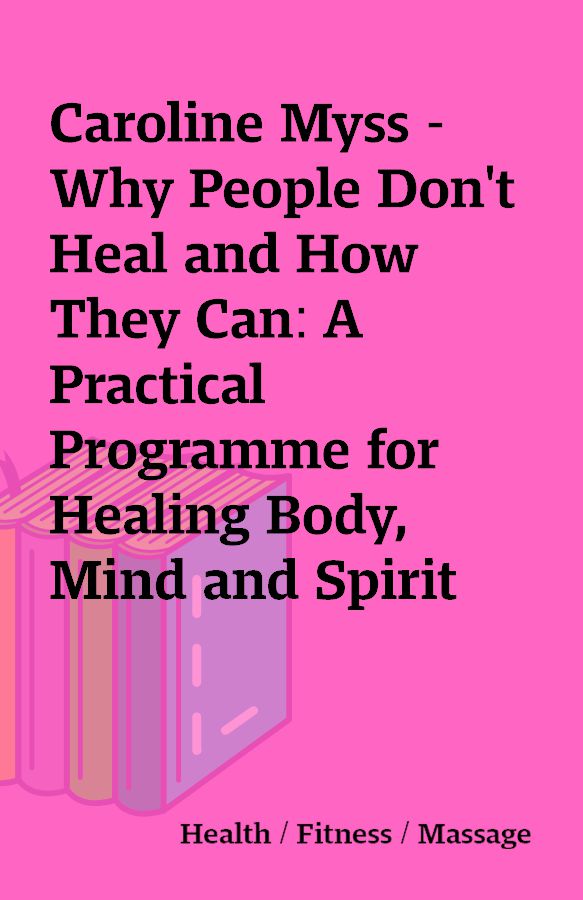
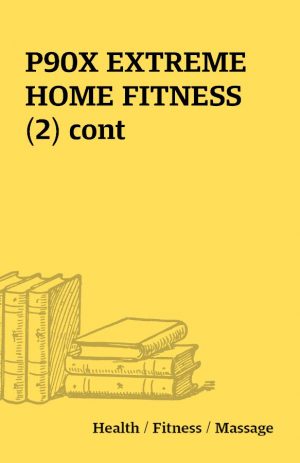
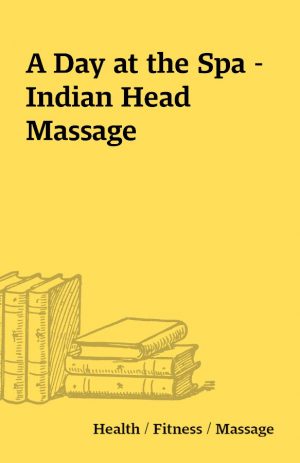
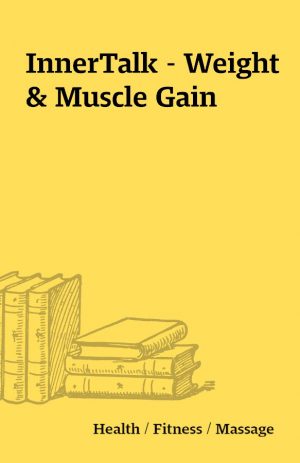
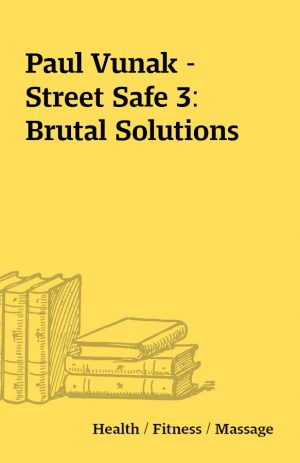
Reviews
There are no reviews yet.